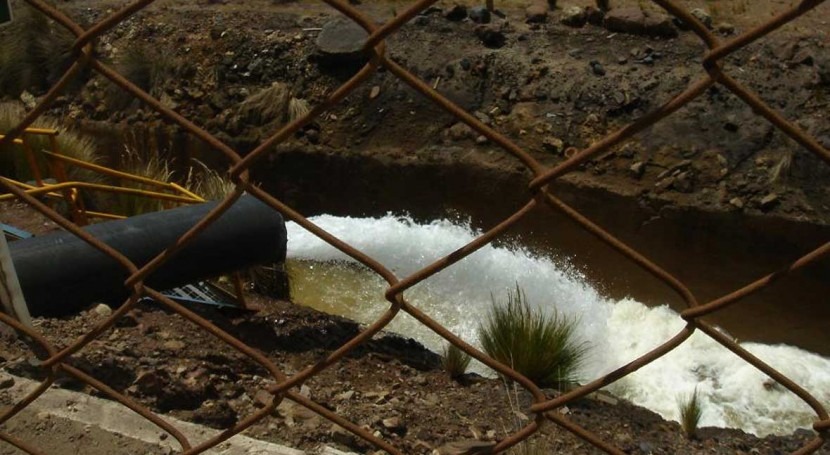Wastewater in many ways is not a waste but a resource.
And the difference is how we choose to look at it.
For the most part though a filthy sewage river is repulsive to the common person it holds answers to some of the most pressing problems we face daily.
Energy
Wastewater teems with bacteria and other pathogens…
The main reason why we choose to fear it instead of looking at it favorably.
Of course pathogens come with their fair share of hazards as the current pandemic we are facing globally shows us.
However, when microorganisms exist in wastewater, a whole different ball game is at play that has to do with energy.
Normally, bacteria breakdown organic matter (what we see as dirt in wastewater) for the production of energy.
But something else is produced as this metabolic process proceeds without the interferance of oxygen… electrons.
Yes… the same old electrons we know so well as ‘deadly’ current flow easily as microbes do away with wastewater dirt.
Microbial fuel cells
As complicated as it sounds, it is akin to just placing some wastewater in a sealed container (isolated from oxygen) and connecting it to a wire (conductor) terminating into an external counter-electrode.
This creates a clear path for current (electron flow) to power devices or charge a battery.
But during this process, something else takes place…
An added value comes into the picture…
Dirt in wastewater is also known as Biochemical Oxygen Demand (BOD), a parameter used to measure wastewater quality before release into the environment…
In other words, the higher the BOD, the worse the water.
As bacteria breakdown organic matter in wastewater, they simultaneously reduce the BOD thereby ‘cleaning’ the water as current is produced!
But energy production isn’t efficient without electrodes…
Electrodes are just surfaces that facilitate transfer of charges from the bacteria during this entire process.
They are connected to conducting wires before being placed in wastewater where bacteria anchor onto them forming a ‘microfilm’.
Because this microfilm is an essential surface phenomenon, the higher the surface area of the electrode, the better making activated carbon based electrodes the best electrode material candidates because of their high porosity.
The greater the microfilm surface, the more charge (electrons) is transferred from the bacteria to the electrode and ultimately creation of a current.
This is the principle behind the microbial fuel cell…
An electric generator using wastewater as fuel.
There are many areas ripe for R&D in this regard such as:
Energy conversion efficiency for different types of bacteria;
Modification of different electrodes and;
Maximum amount of energy that could be produced per litre of different types of wastewater…
Any one desiring a research topic?
There you have a few…
But beyond energy, agriculture is one formidable area where wastewater could be of use.
Most wastewater (especially sewage) appears green precisely because of the presence of a special type of water pollutants called nutrients…
Yes… You heard me right… nutrients.
Nitrates and phosphates
Nitrates and phosphates are actually agricultural nutrients useful for crop development which sometimes find their way into waste water.
This happens due to practices such as use of fertilizers, poor sewage disposal and industrial activity.
When these nutrients accumulate significantly in water bodies, the result is the growth of algae and vascular plants such as hyacinths… a process called eutrophication.
Eutrophication deprives water bodies of enough sunlight but also reduces dissolved oxygen due leading to destruction of aquatic life.
In other words, it creates a massive problem environmentally.
But what if we could recapture these nutrients and plough them back to agriculture?
How?
Biochar
Being a carbon-based material produced by pyrolysis of organic waste matter, biochar’s porous structure (much like activated carbon) could be used to filter off nutrients from wastewater in order to reuse them in agriculture.
This is not a new strategy.
There are farming communities already making use of biochar in cultivation.
But biochar is not only useful in delivering nutrients the crops so much need…
It is also a climate friendly way of enriching our soils by preventing release of this carbon into the atmosphere.
Biochar is also known to prevent release of nitrous oxides, green house gases associated with agriculture and instead retain them in soils where they are useful for crops.
But why not use wastewater directly if we know it has nutrients… we might ask?
Well the reason is because wastewater is a concoction of many pollutants some of which we seriously don’t want to end up in our food…
Heavy metals, pesticide residues, pharmaceutical metabolites, dyes, microorganisms etc.
To name but a few.
So it’s much safer to find ways of targeted removal of nutrients for reuse in cultivation.
In conclusion
Energy and agriculture are useful for the progress of any nation.
But what if wastewater could be roped in to drive our quest for energy and food security?
A question that is pregnant with endless possibilities…
Originally posted on https://cleannovate.home.blog






